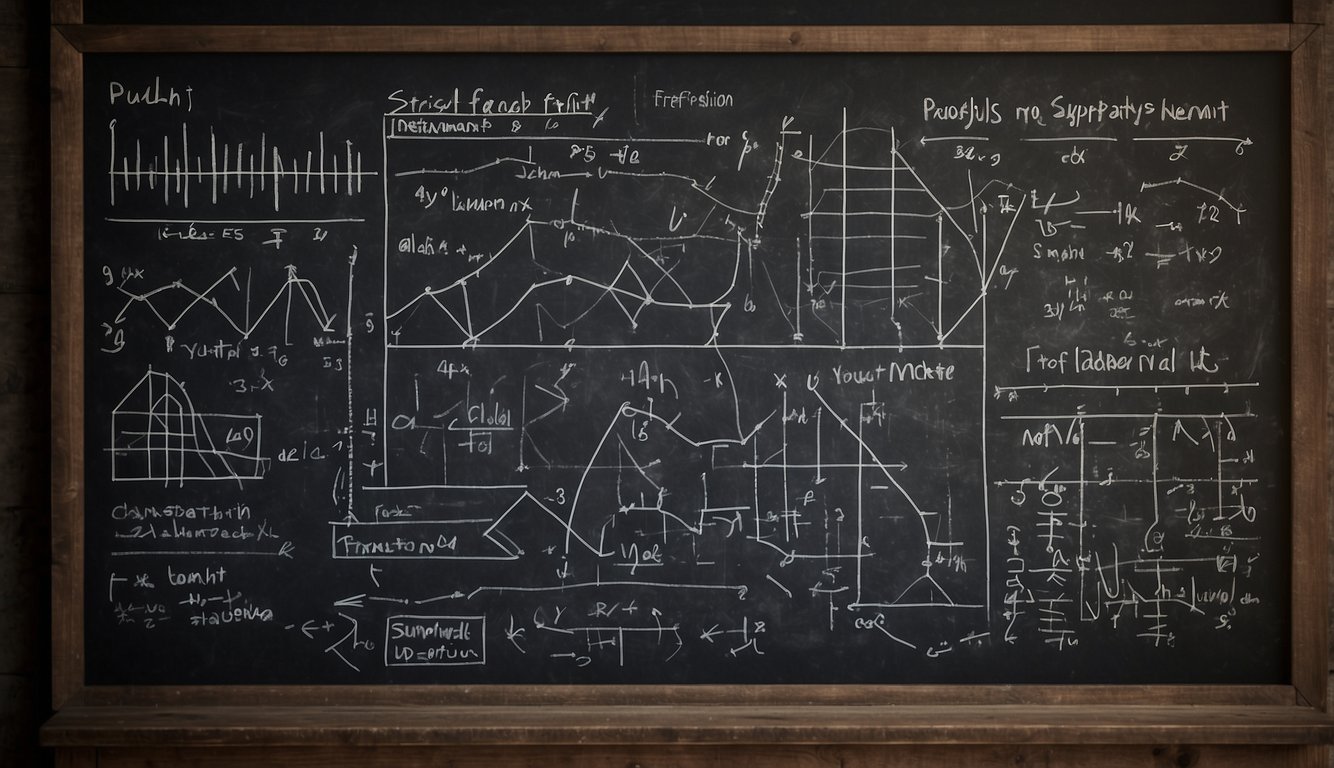Are you preparing for the JAMB Economics examination? If so, you may be wondering what topics are most frequently covered on the exam. Knowing the most repeated topics can help you focus your studies and increase your chances of success on the JAMB exam.
The JAMB Economics exam is a crucial component of the Unified Tertiary Matriculation Examination (UTME) in Nigeria. Candidates who perform well on this exam can gain admission to some of the country’s top universities. However, the exam is notoriously difficult, and many students struggle to pass.
To help you prepare for the JAMB Economics exam, we’ve compiled a list of the most repeated topics on the test. By focusing your studies on these topics, you can ensure that you’re well-prepared for the exam and increase your chances of success.
Table of contents
Fundamental Economic Concepts

As you prepare for your JAMB Economics exam, it is important to have a clear understanding of the fundamental economic concepts. These concepts are the building blocks of Economics and are essential to understanding how the economy works.
Scarcity and Choice
Scarcity is a fundamental economic problem that arises because resources are limited while human wants are unlimited. As a result, individuals, businesses, and governments must make choices about how to allocate these limited resources to meet their unlimited wants. This is where the concept of choice comes in.
In Economics, choice refers to the process of selecting one option over another. This involves weighing the costs and benefits of each option and choosing the one that provides the greatest benefit at the lowest cost.
Understanding the concept of scarcity and the need to make choices is essential to understanding how markets work and how resources are allocated.
Scale of Preference and Opportunity Cost
The scale of preference is a list of wants ranked in order of importance. This list is used to guide individuals, businesses, and governments in making choices about how to allocate resources.
Opportunity cost is the cost of the next best alternative forgone when making a choice. It is important to consider opportunity cost when making decisions because every choice has a cost.
For example, if you have a limited amount of money, you may have to choose between buying a new phone or going on a vacation. If you choose to buy the phone, the opportunity cost is the vacation you could have taken with that money. Understanding the concept of opportunity cost is essential to making informed decisions and maximizing the use of limited resources.
Economic Systems and Theories
An economic system is a set of institutions and mechanisms that govern the production, distribution, and consumption of goods and services in a society. There are different types of economic systems, including market economies, command economies, and mixed economies.
Economic theories are explanations of how the economy works and how economic agents interact with each other. Some of the most important economic theories include supply and demand, marginal utility, and the law of diminishing returns.
Understanding economic systems and theories is essential to understanding how the economy works and how economic policies can be used to achieve desired outcomes. By studying these concepts, you will be better equipped to analyze economic issues and make informed decisions.
Microeconomic Principles

In JAMB Economics, Microeconomic Principles is one of the most repeated topics. This section covers the fundamental concepts of microeconomics, which include the behavior of individual consumers, firms, and markets.
Below are the subsections that are usually covered in this topic:
Demand and Supply Analysis
Demand and supply analysis is a critical component of microeconomics. It involves the study of how buyers and sellers interact in a market to determine the price and quantity of a good or service.
The demand curve shows the quantity of a good or service that consumers are willing and able to buy at different prices, while the supply curve shows the quantity of a good or service that producers are willing and able to sell at different prices.
Theory of Production
The theory of production is another important aspect of microeconomics. It explains how firms combine inputs (factors of production) to produce output (goods and services). The factors of production include land, labor, capital, and entrepreneurship. The theory of production also covers the concepts of total product, marginal product, and average product.
Market Structures
Market structures refer to the different types of markets that exist in an economy. The four main types of market structures are perfect competition, monopolistic competition, oligopoly, and monopoly.
Each market structure has its unique characteristics, such as the number of firms, the degree of product differentiation, and the barriers to entry.
In summary, the Microeconomic Principles section of JAMB Economics covers the fundamental concepts of microeconomics, including demand and supply analysis, the theory of production, and market structures.
It is essential to have a good understanding of these concepts to succeed in the JAMB Economics exam.
Macroeconomic Concepts

Macroeconomics is a branch of economics that deals with the performance, structure, and behavior of the entire economy rather than individual markets.
It is an important topic in JAMB Economics and it is essential that you have a good understanding of the key concepts in this area.
National Income
National income is the total value of all goods and services produced within a country over a given period of time. It is an important measure of a country’s economic performance and is used to assess the standard of living of its citizens.
In JAMB Economics, you will be expected to have a good understanding of the different methods used to calculate national income such as the income method, output method, and expenditure method.
Inflation and Money
Inflation is the rate at which the general level of prices for goods and services is rising, and it is an important concept in macroeconomics.
In JAMB Economics, you will be expected to have a good understanding of the causes and effects of inflation, as well as the different types of inflation such as demand-pull inflation and cost-push inflation.
Money, on the other hand, refers to any medium of exchange that is widely accepted in an economy.
In JAMB Economics, you will be expected to have a good understanding of the different types of money such as fiat money and commodity money.
Economic Development and Planning
Economic development refers to the sustained, long-term growth in the standard of living of a country’s population.
In JAMB Economics, you will be expected to have a good understanding of the different factors that contribute to economic development such as education, technology, and infrastructure.
Economic planning, on the other hand, refers to the process of setting goals and objectives for the economy and developing strategies to achieve them.
In JAMB Economics, you will be expected to have a good understanding of the different types of economic planning such as indicative planning and command planning.
In conclusion, having a good understanding of macroeconomic concepts is essential for success in JAMB Economics. By mastering the key concepts in this area such as national income, inflation and money, and economic development and planning, you will be well-equipped to answer questions on this topic in the exam.
Money, Banking, and Finance

When it comes to JAMB Economics, Money, Banking, and Finance is a topic that is frequently repeated.
In this section, we will explore two important subsections of this topic: Financial Institutions and Markets, and Public Finance and Fiscal Policy.
Financial Institutions and Markets
Financial Institutions are entities that provide financial services to customers. They include commercial banks, insurance companies, investment banks, and other similar organizations. Capital Market, on the other hand, refers to the market where long-term financial instruments such as bonds and stocks are traded.
In JAMB Economics, questions related to Financial Institutions and Markets often touch on topics such as the functions of commercial banks, the role of the Central Bank in regulating the financial system, and the different types of financial instruments traded in the Capital Market.
Public Finance and Fiscal Policy
Public Finance and Fiscal Policy deal with the management of government revenue and expenditure. It covers topics such as taxation, government spending, and debt management.
Questions related to Public Finance and Fiscal Policy in JAMB Economics often require an understanding of the different types of taxes, their impact on the economy, and the role of government in managing the economy through fiscal policies.
Overall, having a good understanding of Money, Banking, and Finance is essential for anyone preparing for JAMB Economics. It is important to be familiar with the different Financial Institutions and Markets, as well as the principles of Public Finance and Fiscal Policy.
Labor Market and Industrial Structure

Employment and Unemployment
The labor market is a vital aspect of any economy. In JAMB Economics, questions on the labor market and unemployment are frequently asked. The labor market refers to the market where labor services are bought and sold.
The demand for labor is derived from the demand for goods and services. In other words, firms demand labor to produce goods and services. On the other hand, the supply of labor is derived from the population.
In JAMB Economics, you may be asked to analyze the factors that affect the demand and supply of labor, and the impact of government policies on the labor market.
Unemployment is a significant issue in the labor market. It refers to the situation where individuals who are willing and able to work are unable to find employment.
In JAMB Economics, you may be asked to explain the different types of unemployment, their causes, and their impact on the economy. You may also be asked to analyze government policies aimed at reducing unemployment.
Industrial Organizations
Industrial organizations refer to the different types of business organizations in an economy. In JAMB Economics, questions on industrial organizations are frequently asked. You may be asked to explain the different types of business organizations, their features, and their advantages and disadvantages.
Business organizations can be classified into three main types: sole proprietorship, partnership, and public enterprises. A sole proprietorship is a business owned and run by one person. A partnership is a business owned and run by two or more people. Public enterprises are businesses owned and run by the government.
In JAMB Economics, you may be asked to analyze the factors that influence the choice of business organization, and the impact of government policies on industrial organizations. You may also be asked to explain the different types of industrial organizations in terms of labor, wage, profit, and partnership.
Agricultural and Natural Resources

Agricultural Economics
Agricultural economics is a crucial topic in JAMB economics, as it deals with the production and distribution of agricultural products. This topic covers concepts such as supply and demand, price determination, market structure, and government intervention in the agricultural sector.
You should be familiar with the various types of agricultural products, including crops, livestock, and fisheries, as well as the factors that affect their production and distribution.
To excel in this area, you need to understand the principles of agricultural economics, such as the law of diminishing returns, economies of scale, and opportunity cost. You should also be able to analyze the impact of government policies on agricultural production, such as subsidies, tariffs, and price controls.
Management of Natural Resources
The management of natural resources is another important topic in JAMB economics. This topic covers the use and conservation of natural resources such as forests, water, and minerals. You should be familiar with the various types of natural resources and the factors that affect their availability and distribution.
To excel in this area, you need to understand the principles of natural resource management, such as sustainable development, environmental economics, and resource depletion. You should also be able to analyze the impact of government policies on natural resource management, such as conservation programs, taxes, and regulations.
In conclusion, understanding agricultural economics and the management of natural resources is essential for success in JAMB economics.
By mastering these topics, you will be able to analyze and interpret economic data related to agriculture and natural resources, and make informed decisions about their production and distribution.
International Trade and Balance of Payments

When it comes to JAMB Economics, one of the most repeated topics is International Trade and Balance of Payments. This topic covers a wide range of concepts related to the exchange of goods and services between countries, as well as the financial transactions that take place as a result of these exchanges.
Trade Theories
One of the key concepts in International Trade is the theory of comparative advantage. This theory suggests that countries should specialize in producing goods and services that they are relatively more efficient at producing, and then trade with other countries to obtain the goods and services that they are relatively less efficient at producing. This allows both countries to benefit from the trade, as they can obtain goods and services at a lower cost than if they had to produce them themselves.
Another important concept in International Trade is the theory of absolute advantage. This theory suggests that a country should specialize in producing goods and services that it can produce more efficiently than any other country, and then trade with other countries to obtain the goods and services that it cannot produce efficiently.
This theory is less widely accepted than the theory of comparative advantage, as it does not take into account the fact that some countries may have an absolute advantage in producing many different goods and services.
Foreign Exchange and Trade Policies
Another important aspect of International Trade is the management of foreign exchange and trade policies. This includes the regulation of currency exchange rates, as well as the imposition of tariffs and other trade barriers. These policies can have a significant impact on the flow of goods and services between countries, and can also affect the balance of payments between countries.
In order to manage these policies effectively, it is important to have a clear understanding of the economic systems in place in different countries. This includes both the macroeconomic policies that are implemented by governments, as well as the microeconomic factors that affect individual businesses and consumers.
Overall, International Trade and Balance of Payments is a complex and important topic in JAMB Economics. By understanding the key concepts and policies that are involved, you can gain a deeper understanding of the global economy and the factors that affect it.
Preparation for JAMB Economics

To excel in JAMB Economics, it is important to prepare adequately.
Here are some effective preparation methods to help you achieve success in your JAMB Economics exam.
Effective Study Methods
Studying for JAMB Economics requires a strategic approach. You can start by reviewing the JAMB syllabus to get a clear understanding of the topics to be covered. You can also use past questions to identify the areas where you need to focus more.
Create a study plan that suits your schedule and stick to it. Ensure that you allocate enough time for each topic and use study materials that are relevant to the JAMB syllabus. You can also join study groups or attend tutorials to get a better understanding of the subject.
Analysis of Past Questions
Analyzing past questions is an effective way to prepare for JAMB Economics. It helps you to identify the pattern of questions and the areas where you need to focus more. You can use past questions to test your knowledge and assess your level of preparedness.
Ensure that you have access to a wide range of past questions and practice regularly. You can also use answer guides to help you understand the rationale behind the answers.
By following these strategies, you can prepare effectively for JAMB Economics and increase your chances of success. Remember to stay focused, dedicated, and consistent in your approach.
